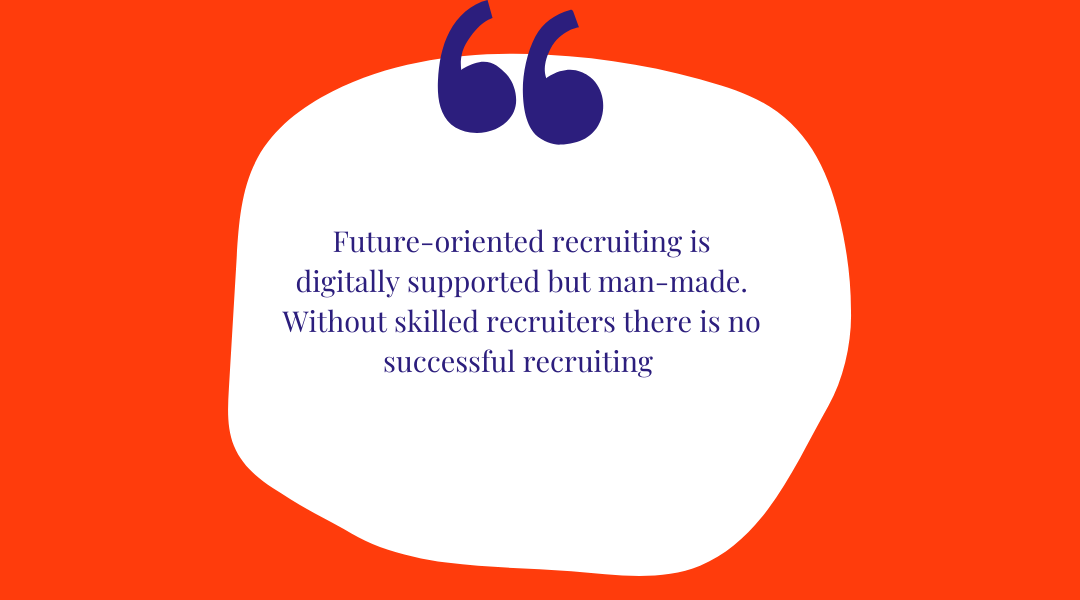Top recruiting trends HR needs to know
From data driven recruiting and analytics to individualisation and social: Irena Szymiczek discusses what HR needs in its recruitment toolbox today

What are the most important recruiting trends today? What are the benefits of new recruiting methods? And how can you implement them so that your HR department benefits to the maximum from the digital possibilities?
Candidate experience focuses on the applicant
You may remember the days when the HR department had free choice when it came to finding talent. The 'war for talent' ended that era – today applicants have far greater power in finding a job. As a result, recruiting potential candidates has become increasingly difficult, time consuming, and costly.
While the requirements of the company were decisive in the application process in the past, today it is the expectations of potential employees. With this twist, recruiters increasingly treat job seekers like customers. Only companies that address the individual candidate and their needs can recruit and retain the best talent.
In an HR study by The Hackett Group, the majority of the executives surveyed stated that they want to focus more on the candidate as an individual in the future. The focus is on people and a positive candidate experience are clear trends that are likely to accelerate further going forward.
Job advertisement 4.0: digital and individual
The trend towards individualisation is also bringing a breath of fresh air to classic job advertisements. HR departments have not been able to reach the majority of candidates on paper for a long time, but the first contact is now an important part of the candidate experience. Recruiters want to make sure that the candidate really feels addressed: Individuality is the key to success.
But how does an individual approach work if you don't even know the applicant? Ideally, the recruiter has an exact picture of the ideal candidate in mind and describes this in the advertisement. It is important to speak the applicant's language and describe precisely which skills are important in order to qualify for the position. In addition, the job posting should appear authentic and match your company's image.
Multiposting for maximum candidate reach
Not only the what and how, but also the where plays an important role in your job advertisement. After all, what use is the best job description to you if nobody sees it? After all, you want to reach the best candidate no matter where they are.
Place your job advertisements on every job portal! Multiposting makes this possible with just a few clicks. Thanks to multiposting, you can reach the younger generations Y and Z not only on job portals, but also via social media channels.
Incidentally, it does not have to be the maximum range everywhere: Try to search locally, especially in the region of your company. As more candidates are reached who do not have to move for the job, the probability of a successful match increases automatically.

Google for Jobs drives recruiting search engine optimisation
Google for Jobs started in Germany in 2019. In fact, jobs from German job portals as well as from career websites of German companies have been indexed for months. Job Search on Google is an optimised job search within the normal Google search. Google changes the visual preparation of search results according to certain user inputs.
Google uses the data from job postings that are already available in digital form on job boards or career websites and displays the three most relevant search results with source. Find out what companies need to do to get their job postings to appear in Google for Jobs. Including a checklist for your own job advertisements!
Searching for the best candidate with active sourcing
Active sourcing means proactively approaching candidates and addressing them directly and individually. This recruiting trend requires HR professionals to contact candidates with high potential through various channels and also to build professional relationships. Even if there is currently no interest, this is a great way to keep in touch with strong candidates.
The great advantage of active sourcing is that recruiters find candidates with whom other companies do not enter into conversation. If a potential employee does not apply himself, he will not be noticed at all by most companies. In this way, HR departments often miss great opportunities, as candidates with high potential are less actively looking for candidates and thus get lost in the recruiting process.
Get the most out of social media with social sourcing
The internet has continuously changed the hiring process in recent years. Who would have thought that Facebook or Twitter could one day help connect recruiters and job seekers?
Not only social recruiting and job advertisements in your company's social channels play a role. Companies are now using their social networks to proactively search for potential candidates: social sourcing.
How it works? For example, post job advertisements in industry-specific Facebook groups. Use Twitter hashtags to narrow the search and make it easier for the candidate to find. Place your ads on LinkedIn so that candidates can apply with their profile or write to promising candidates directly.
In this way, recruiters can also actively build relationships with interested applicants and encourage them to apply. This is particularly effective if you want to appeal to the younger generation of employees.
Applicant management software: skill matching for the right candidate
Skill matching enables you to narrow down applicants quickly and efficiently. Instead of manually viewing and comparing CVs and weighing up their plausibility, you can use applicant management software for skill matching.
Define criteria for the ideal candidate that exactly match the requirements for the job. The recruiting software automatically retrieves data and uses matching algorithms to compare the skills sought for a position with the information provided by the candidate.
The result is an immediate, high-quality forecast as to whether the applicant is a good fit for the job. After the pre-selection has been made, the applicant data is automatically shared with the specialist department. In this way, all relevant stakeholders in the recruiting process can get an idea of the candidates.
Recruiter 4.0: knowledge of human nature meets technology
Future-oriented recruiting is digitally supported but man-made. Without skilled recruiters there is no successful recruiting. Even data and technology are ultimately only a means to an end. The recruiting process continues to be primarily interpersonal. Using the data and new technology for an optimised recruiting process also requires people and their judgment.
With digitisation, however, the competence profile of HR employees has fundamentally changed. Recruiters still need a knowledge of human nature in order to act as a successful communicator between a candidate and the company. In addition, today's recruiters must have a digital mindset, analytical skills and a confident use of HR software and new tools. Successful HR executives already use software-based HR solutions for applicant management.
The training and further education of the personnel department is therefore the cornerstone for successful recruiting in the company. Accordingly, the HR team should be supported by management and specialist departments and receive ongoing training. Training on digital HR solutions and new technologies should take place regularly. Successful HR managers already use qualification and seminar administrations to keep track of the qualifications of their employees.
Recruiting analytics enables data-driven recruiting
The more companies use data analysis, the more the HR department can generally influence the company-wide strategy. The recruiting of the future requires measurability and data-based decisions in the HR departments. According to a Deloitte study, employee analysis is a priority for 71% of the companies surveyed. However, only 9% know which aspect of talent management actually affects the performance in their company.
Perhaps you've heard of recruiting analytics and big data? Thanks to recruiting analytics, recruiters can use their own data to find out which recruiting steps are influencing performance.
In addition, recruiting analytics help in the context of talent analyses to narrow down the selection of applicants and to find the best candidate more quickly. Big data is generated from existing company data and converted into insights about your company thanks to machine learning algorithms.
The prerequisite: digital processes and digital data that you can use for data analysis.
Automation creates transparency and fairness
Digital solutions give you a clear overview of your application process. They allow more control over the quantity and quality of applications for all job postings. By quickly and easily comparing applicants, they guarantee more transparency in the hiring process - for recruiters and candidates.
The automated applicant management enables you and your applicants to have a fair, objective application and evaluation process. In addition, your applicants will be happy about the clear structures and the quick feedback!

For more information please go to EASY Software

